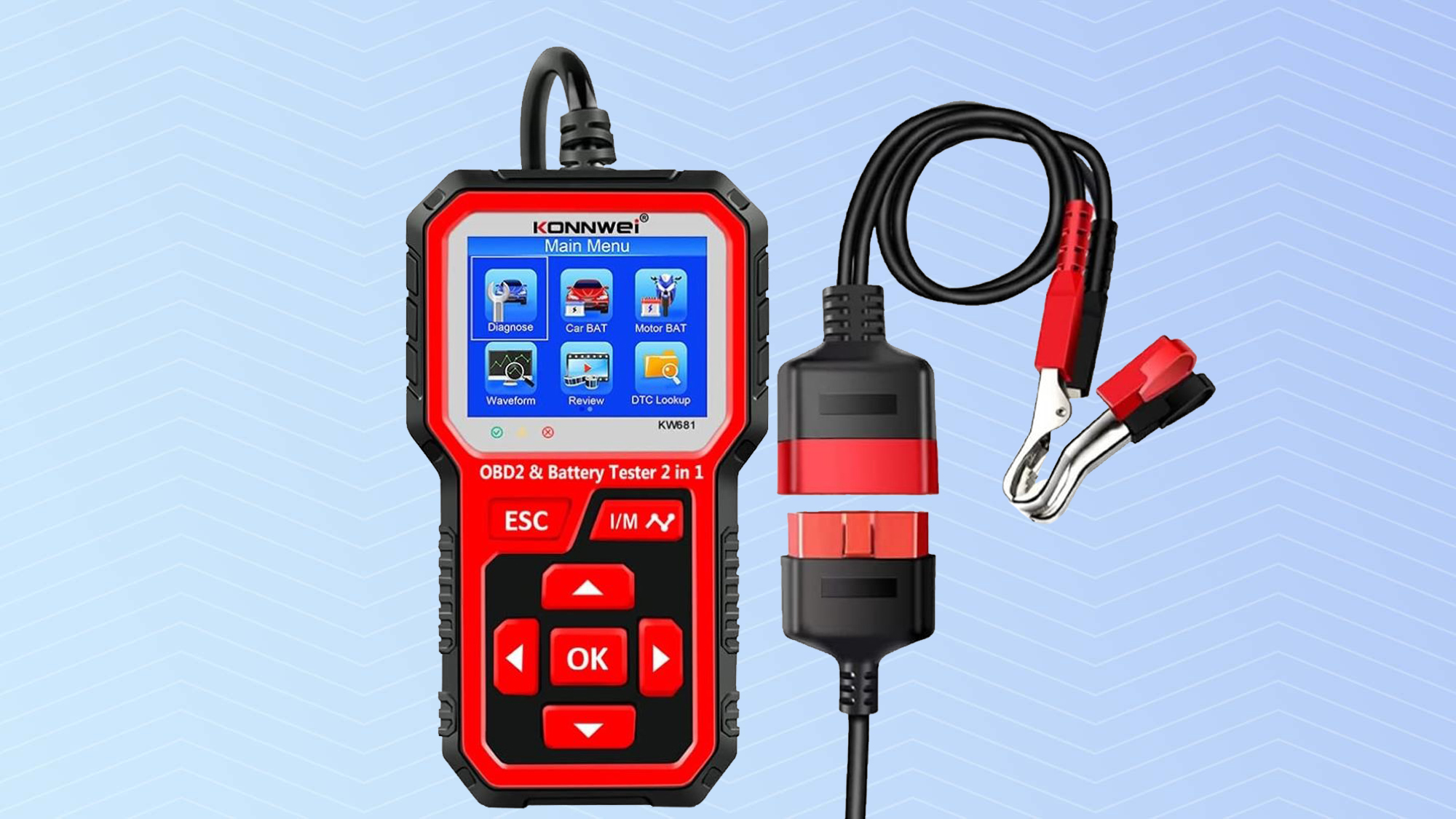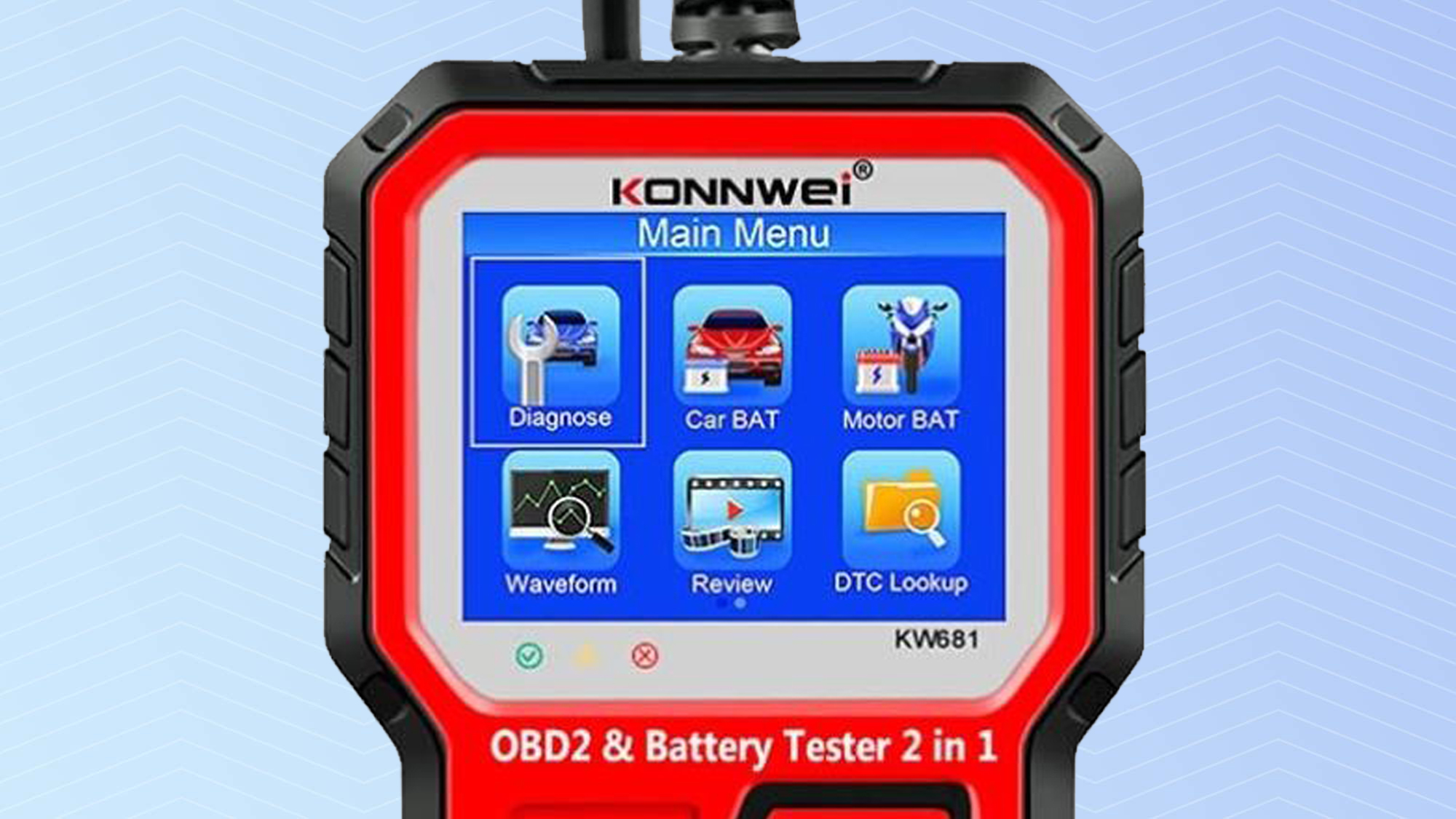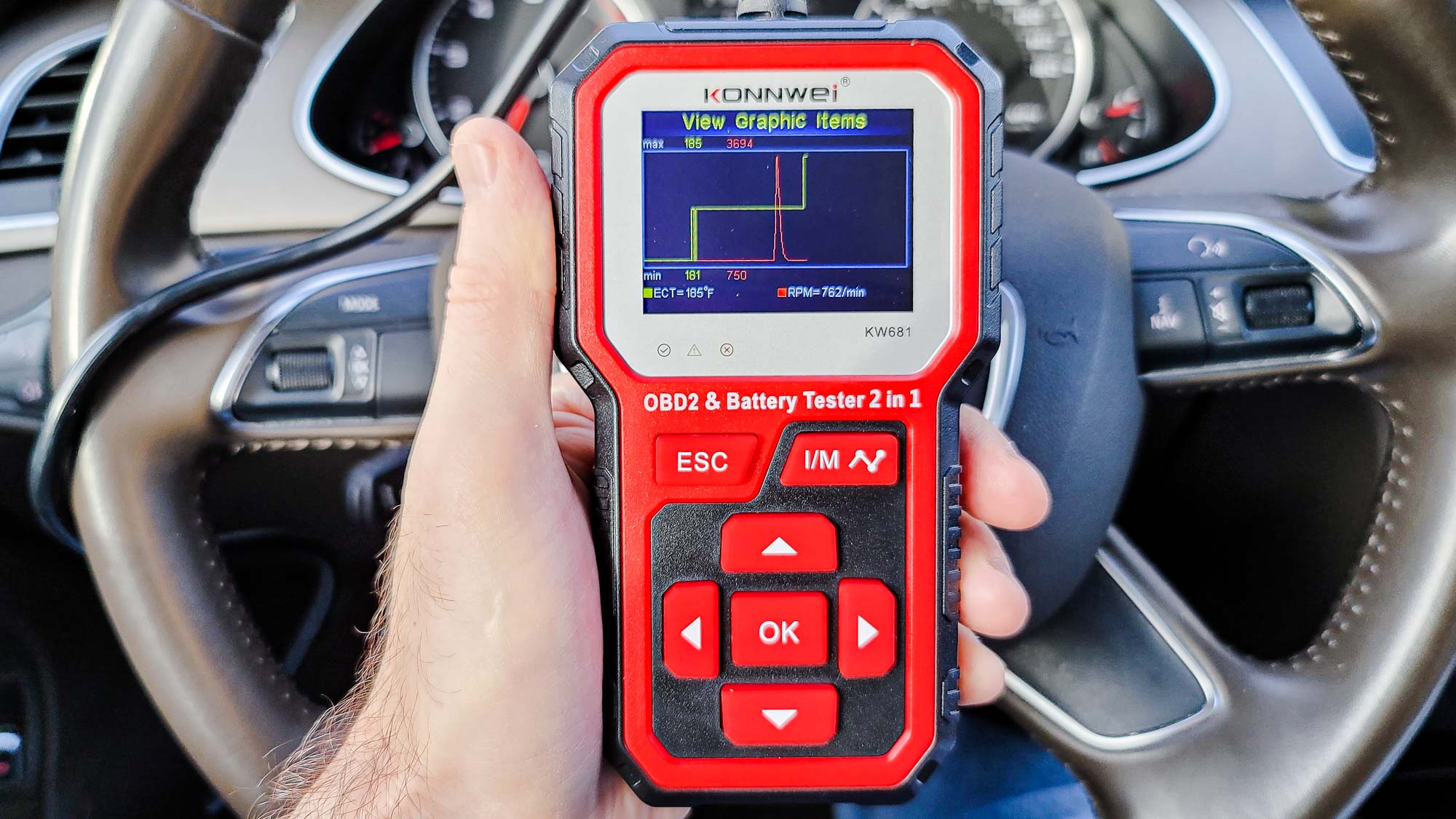Tom's Guide Verdict
Want to check your car’s battery and alternator along with the expected OBD diagnostic tasks? Konnwei’s KW681 can do it, and for less than $100 it’s a genuine bargain.
Pros
- +
Includes battery tester
- +
Small and light
- +
Inexpensive
- +
Works with motorcycle batteries
Cons
- -
Lacks high-end features
- -
Can’t use battery tester and OBD scanner at once
- -
Battery clips not marked for polarity
Why you can trust Tom's Guide
Size: 5.5 x 3.2 x 1.0 inches
Weight: 4.3 ounces
Live Data: Yes
Display type and size: Color, 2.4 inches
Number of keys: 7
Bluetooth: No
Handheld: Yes
Warranty: 1 year
With its ability to check the battery and put an electrical load on the car’s charging system, the Konnwei KW681 is a must-have for older cars, particularly in the winter when batteries often fail. It lacks some high-end features on more expensive models, but the OBD scanner squeezes a lot into a small and light case. At $70, it’s a steal for those who need to keep an eye on their car and its battery.
Konnwei KW681: Pricing and availability
Available for $70, the Konnwei KW681 has something that few OBD scanners have: a full battery tester, along with clips for connecting the device to the car’s electrical system. The company has a wide range of automotive tools as well, from basic scanners to jump-start batteries.
Konnwei KW681: Design
The Konnwei KW681 may look like any other budget OBD scanner, but it has a secret. The device comes with an extension to its OBD cable that connects to a car’s battery, offering a variety of electrical tests that others can’t perform. On the downside, you can’t use the battery tester and OBD scanner at the same time – it’s one or the other.

For all it does, the KW681 is small and light at 5.5 x 3.2 x 1.0 inches and 4.3 ounces. That’s on a par with the less capable ThinkOBD 100. The red and black OBD scanner is easy to spot at the bottom of a toolbox, but you might want to store both it and its cables into the included nylon bag.
Its 2.4-inch color screen can’t compare with the larger displays like the Autel AutoLink AL539’s 2.8-inch color screen or the ThinkCar ThinkScan 609’s 3.5-inch display. That said, the on-screen data is easier to view and work with than the ThinkOBD 100’s cramped 1.8-inch screen.
The KW681’s seven button interface can be awkward at times, but the scanner has a shortcut key for running a pre-inspection I/M Readiness series of tests. Below the screen are red, yellow and green LEDs to show the results.

The home screen is really a pair of screens with six icons on the first and three on the second. Together, they cover the gamut of the KW681’s operations with everything from Diagnostic to Setup to DTC Lookup.
Get instant access to breaking news, the hottest reviews, great deals and helpful tips.

In addition to the 56-inch OBD cable, the package includes an 18-inch extension that has small battery clips at the end for checking the battery and car’s charging system. Happily, both include Velcro cable wraps. On the downside, the clips are not marked “+” and “-” but are colored red and black for positive and negative. The device also can help diagnose battery problems with motorcycles as well.
Konnwei KW681: Setup
A few seconds after I plugged the KW681’s OBD cable into my 2014 Audi A4 AllRoad’s diagnostic port, the scanner’s screen started up and showed the company’s logo. The hard wired 56-inch cable was just long enough to reach the car’s engine bay; getting an extension cord might be a good idea.
In addition to a one-year warranty, the KW681 comes with its cables. The company provides a downloadable cursory 14-page startup guide and includes lifetime support, firmware updates and an app for doing the upgrades. The Shenzen, China-based company’s support crew is available for questions via email, a toll call or fax.
Konnwei KW681: Performance
Once connected, the KW681’s display lit up quickly and performed well. It was able to show the car’s Vehicle Identification Number (VIN) and picked up my introduced fault after I disconnected the oil temperature sensor on my 2014 Audi A4 AllRoad. I was able to turn off the Check Engine light.
Aside from resetting the Oil Change light, the scanner also shows live data, such as air temperature, throttle position and engine speed. Unfortunately, the interface is less than efficient, making you browse through eight pages of choices with the arrow key. Any of the parameters can be graphed for analysis.

On the other hand, the KW681 only covers generic faults and lacks the ability to look into problems with the car’s air bags or the anti-lock brakes – things that are included in premium OBD scanners. Unlike Innova scanners, the KW681 doesn’t suggest repairs or parts.

While it lacks the full electrical multimeter on Autel’s AutoLink AL539, the KW681 can give the car’s charging system a good workout. In addition to checking the voltage, it showed the alternator’s wave form, a valuable piece of information when diagnosing a charging problem. Finally, it can put a load on the battery to check the alternator’s operations. This makes it a must-have for cars with old batteries in the winter.
Konnwei KW681: Verdict
If your car’s battery is having trouble keeping a charge, the Konnwei KW681 can help figure out why along with regular diagnostic tasks. That’s because in addition to running an array of OBD tests, it can give the battery and alternator a full workout. Small and light, it may not have some high-end features, but the KW681 can help when there’s not enough juice to start the car.
Brian Nadel is a freelance writer and editor who specializes in technology reporting and reviewing. He works out of the suburban New York City area and has covered topics from nuclear power plants and Wi-Fi routers to cars and tablets. The former editor-in-chief of Mobile Computing and Communications, Nadel is the recipient of the TransPacific Writing Award.


